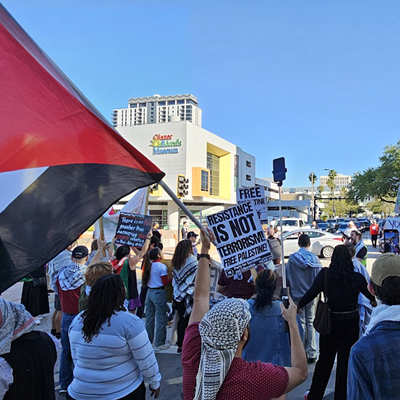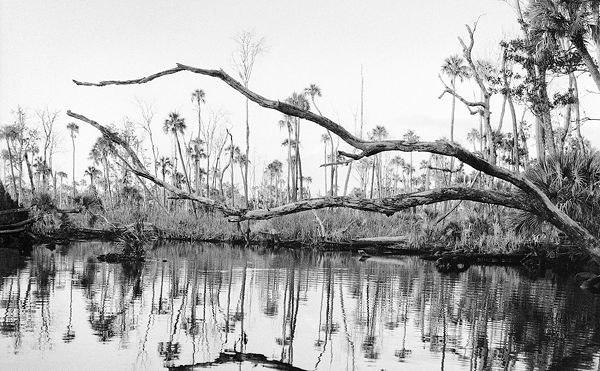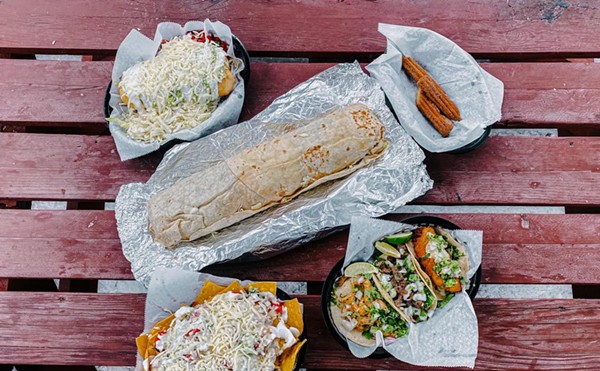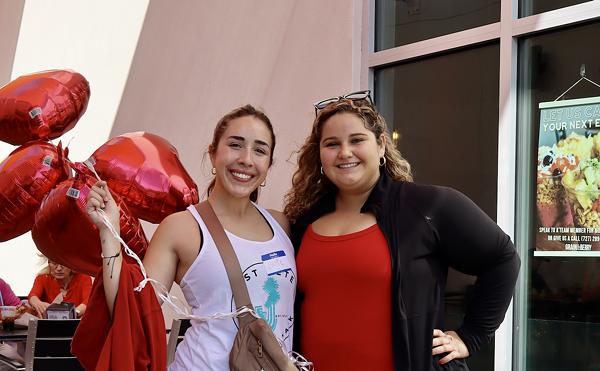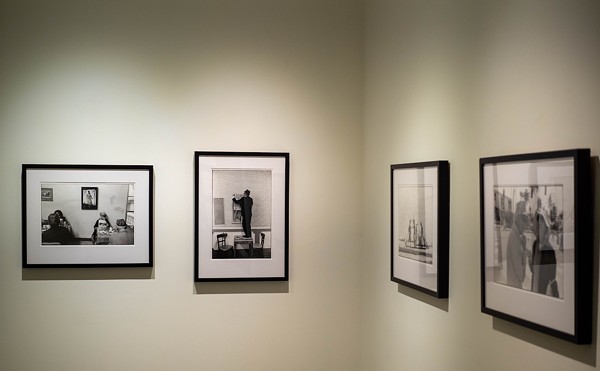Political and social turmoil continues to slog Cuban contemporary life, but the human spirit has the potential to be unfaltering, undeterred. If anything, the tremors of Cuba’s past and present turbulence have propelled the nation’s pioneers, and nowhere is the forward momentum more palpable than in Cuba’s art scene.
A sampling of the nation’s vanguard will be on view beginning Fri., June 7, at the University of South Florida Contemporary Art Museum in one of the museum’s two summer exhibitions: Occupying, Building, Thinking: Poetic and Discursive Perspectives on Contemporary Cuban Video Art (1990-2010). Videos by 22 celebrated Cuban artists will be on view, continuing USFCAM’s 12-year relationship with Cuban contemporary artists. (Paul Robinson: Form of Absence — x-rays, paintings and reliquaries coincides with the show.)
The USF Graphicstudio, CAM’s sister organization, has been working closely with Cuban artists since 1999. Noel Smith, curator of Latin American and Caribbean Art at Graphicstudio, partnered with Miami-based curator Dennys Matos to bring the exhibit to CAM.
“We feel that Cuban contemporary art — because of its very advanced technical and thematic qualities, its high profile on the international level, and its particular interest for our region geographically and historically — suits our program very well,” Smith said.
It wasn’t until the late 1980s/early ’90s that video art became a prominent fixture on the Cuban art scene. The medium suited the inventive spirit of Cuban artists, who continued to create work in the face of political, economic and social dissension.
Cuban artist Ramon Williams, whose piece “The Lost Abstractions” appears in Occupying, Building, Thinking, believes that video art is effective in creating a sense of stability in an unpredictable world. According to Williams, it is a “time-based visual language” that counteracts many levels of stagnation in Cuban culture.
“The very contradictory reality of Cubans becomes a vast source of inspiration,” Williams said.
According to Smith, many of the videos featured in the exhibit are shot in real-life situations, and allow the audience to relate and connect on a personal level. The pieces rely mainly on the images to communicate meaning to the audience. In this way, the work transcends language and location.
“The majority of the videos are based on scenes taken from everyday life that we could all conceivably share,” Smith said. “They thereby lead to engagement and empathy in the viewer regardless of language and cultural difference.”
As a tribute to historic Cuban culture, the sparse interior of the CAM will be transformed to accommodate the exhibit. Site-specific installation-artist Vanessa Diaz has created an environment that will mirror the aesthetics of a Havana living room — including tile floors, couches and a large statue of the Virgin Mary.
On a single large screen, all 22 videos will be projected in a loop. Elsewhere in the exhibit, three smaller monitors will display the videos separated into the three sections that inspired the exhibition’s name — Occupying, Building and Thinking.
The sections exist together in an interconnected system, exploring themes of loss, impermanence and hope. One of the nine videos featured in the Occupying segment of the exhibit — Yaima Carrazana’s “Tribute to the Old Neon Signs of Havana” — includes shots of dying, broken neon signs that once epitomized the city. Grethel Rasua’s “Covered with Yearnings” — part of the Building segment — shows people vigorously attempting to cover gray, decrepit city walls with bright paint. Featured in the Thinking segment, Jose Angel Toirac’s “Tengo” depicts a sign-language rendition of Nicolas Guillen’s poem of the same title, which describes the new opportunities afforded to individuals in Cuba after the dissolution of racial discrimination.
“While the title of the exhibition seems very dry and intellectual, the videos themselves are quite appealing and accessible,” Smith said. “The artists use all of the languages, methods and tropes of contemporary video artists worldwide, while basing their works firmly in the Cuban psyche, so the all-over effect is both global and local.”
The presence of the exhibit in Tampa has immense local significance. Ybor City has a deep, extensive history with Cuba — having been a safe haven for Cuban exiles during the struggle for independence from Spain in the 1800s. This garnered the city the unofficial title of the “Cradle of Cuban Liberty.”
According to Smith, the work featured in Occupying, Building, Thinking reflects the ability of human beings to strive for a beautiful present and future, despite the trials of the past.
“I find some of them quite emotionally engaging —even heartbreaking," she said, "in the honesty with which they portray their sense of disappointment with the failure of the social utopia that the Revolution intended to bring to Cuba, their efforts to deal with the economic and political reality of their lives, and their determination to create something different.”


